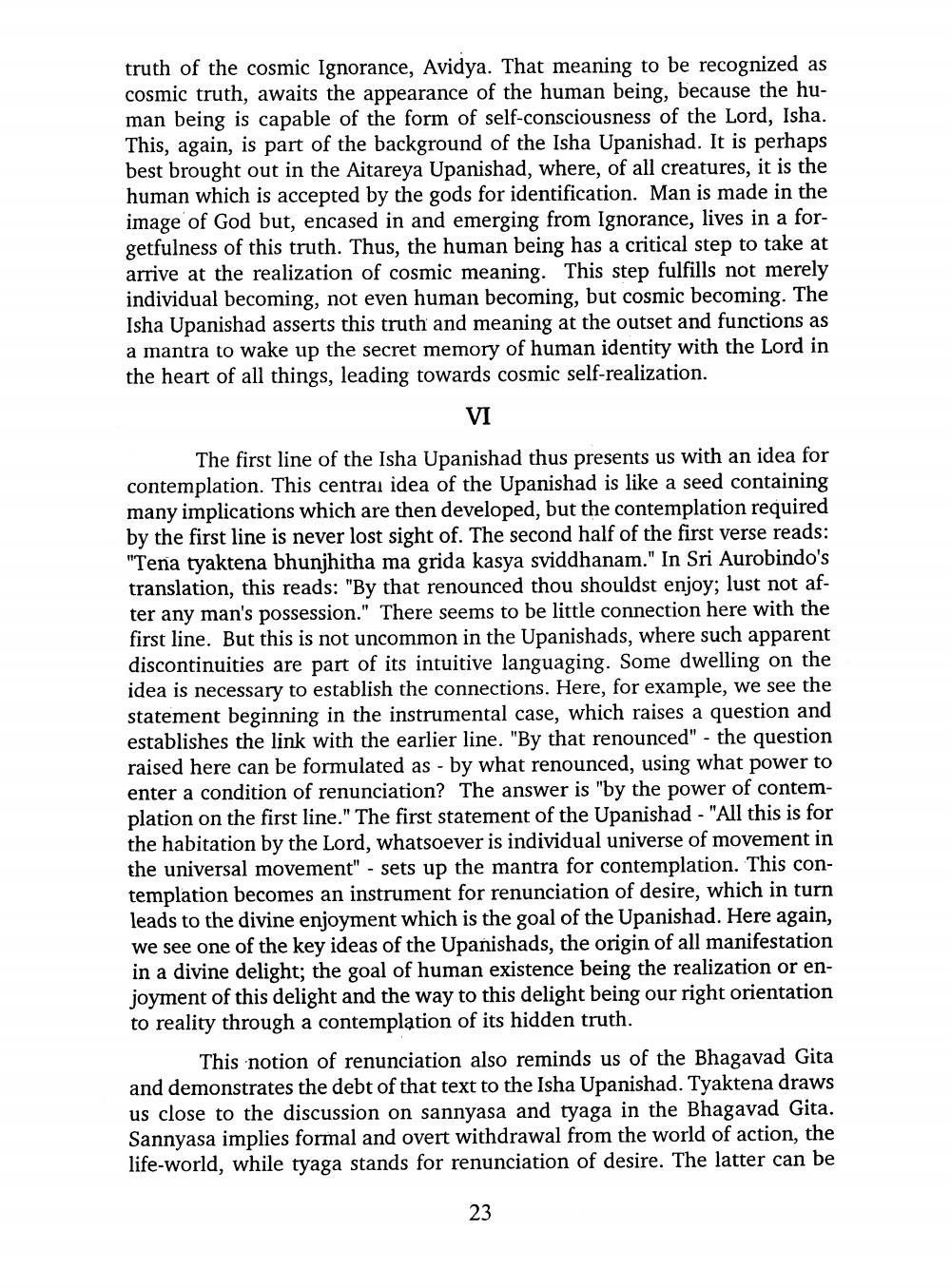________________
truth of the cosmic Ignorance, Avidya. That meaning to be recognized as cosmic truth, awaits the appearance of the human being, because the human being is capable of the form of self-consciousness of the Lord, Isha. This, again, is part of the background of the Isha Upanishad. It is perhaps best brought out in the Aitareya Upanishad, where, of all creatures, it is the human which is accepted by the gods for identification. Man is made in the image of God but, encased in and emerging from Ignorance, lives in a forgetfulness of this truth. Thus, the human being has a critical step to take at arrive at the realization of cosmic meaning. This step fulfills not merely individual becoming, not even human becoming, but cosmic becoming. The Isha Upanishad asserts this truth and meaning at the outset and functions as a mantra to wake up the secret memory of human identity with the Lord in the heart of all things, leading towards cosmic self-realization.
VI
The first line of the Isha Upanishad thus presents us with an idea for contemplation. This central idea of the Upanishad is like a seed containing many implications which are then developed, but the contemplation required by the first line is never lost sight of. The second half of the first verse reads: "Tena tyaktena bhunjhitha ma grida kasya sviddhanam." In Sri Aurobindo's translation, this reads: "By that renounced thou shouldst enjoy; lust not af ter any man's possession." There seems to be little connection here with the first line. But this is not uncommon in the Upanishads, where such apparent discontinuities are part of its intuitive languaging. Some dwelling on the idea is necessary to establish the connections. Here, for example, we see the statement beginning in the instrumental case, which raises a question and establishes the link with the earlier line. "By that renounced" the question raised here can be formulated as by what renounced, using what power to enter a condition of renunciation? The answer is "by the power of contemplation on the first line." The first statement of the Upanishad - "All this is for the habitation by the Lord, whatsoever is individual universe of movement in the universal movement" sets up the mantra for contemplation. This contemplation becomes an instrument for renunciation of desire, which in turn leads to the divine enjoyment which is the goal of the Upanishad. Here again, we see one of the key ideas of the Upanishads, the origin of all manifestation in a divine delight; the goal of human existence being the realization or enjoyment of this delight and the way to this delight being our right orientation to reality through a contemplation of its hidden truth.
This notion of renunciation also reminds us of the Bhagavad Gita and demonstrates the debt of that text to the Isha Upanishad. Tyaktena draws us close to the discussion on sannyasa and tyaga in the Bhagavad Gita. Sannyasa implies formal and overt withdrawal from the world of action, the life-world, while tyaga stands for renunciation of desire. The latter can be
23




